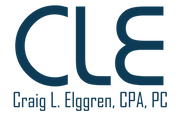Today I want to start a series on how small businesses like yours can fight inflation. Because I know that’s one of the top concerns for businesses across the country right now. But I’d also like to know…
How’s your business faring?
I’m genuinely interested in how things are going and what concerns are topping your list right now in the midst of inflation and the looming recession.
The pandemic forced Phoenix Metro businesses like yours to pivot when it comes to serving customers and developing loyalty. And building services into your business, while struggling to hire staff, and even keep things afloat financially are all huge challenges to getting and keeping customers.
It’s a lot.
Here’s one thought on keeping your staff happy post-pandemic (hint: it’s more than better pay or casual Fridays).
Hybrid work is here to stay. And it’s a pretty attractive employee perk for acquiring (and maintaining) good workers. So, figuring out how to make it work for your business has to be a priority. There are lots of articles on this subject out there. (Here’s a good example.)
Of course, we here at Craig L Elggren, CPA PC are here to help advise you on making that work for your business, both in terms of taxes and operating budget:
www.clecpa.com/schedule-an-appointment/
So, to get into today’s topic, in the interest of helping your business succeed in these inflationary times, one thing you might consider is taking out a business loan.
I know that might seem counterproductive, but to help fight rising costs, it might just be the solution you’re looking for right now.
So, what could that look like for your Phoenix Metro business? Here’s part one in our fighting inflation series…
Craig L Elggren, CPA PC’s Fighting Inflation Series: Taking Out a Business Loan
“If you would know the value of money, try to borrow some.” – Benjamin Franklin
Taking on debt to ease the strain of inflation may seem to go against common business sense, but the right business loan can help you fight rising costs in many areas of your operation.
Our new series on fighting inflation begins with a look at how to make this plan work.
The hits keep on coming
The highest across-the-board price jumps in decades have driven more than four out of five small-business owners to express real worry in recent surveys. That’s all across the country, too, across all sectors and among all sizes of businesses.
Owners report that to cope with rising inflation they’re often raising the prices of their goods and services or cutting staff. Cash flow struggles, rising production costs, reduced sales and slimmer profit margins, and drops in customer loyalty and satisfaction are just a few of the hard knocks businesses are reporting right now.
But the U.S. Chamber of Commerce is reportedly seeing another trend among businesses right now: They’re taking out more loans.
Business Loans: Why and how
Like we asked before, why would businesses take on more debt now?
A few reasons:
– To bulk up inventory before prices rise higher
– To hire new employees before they become scarcer or demand even higher wages
– To accelerate marketing
– To invest in technology or equipment to streamline operations
If those moves sound appealing right now, slow down. Debt is debt even if you take it on to improve your operation. The debate about new debt amid high inflation has, on one side, the argument of repaying a fixed-rate loan easier with cheaper dollars in the future. The other side points out that new debt locks your business into new obligations right when you might need flexibility for your money.
To see if a loan’s for you right now, start with your detailed plans to use the money (the prospective lender is going to want to know this anyway).
Maybe you want to pay off an old loan and refinance at better terms.
If you’re buying equipment, have you done enough price comparisons?
Where and how exactly are you going to market your company? How much is the outlet going to charge to take your ads live? Do you need to engage a consultant?
About hiring, what sort of wages for new talent have you been planning for in these inflationary times?
Tack down the exact figure you need in a loan – no less and no more.
And how much can your company afford to repay a lender each month? Don’t forget lead time: Loan applications can take days to months – and then the money can arrive with surprise fees for the application, guarantees, late repayment, and other details.
The annual percentage rate is of course another major factor in the cost of your loan. Headlines have screamed a lot lately about the Federal Reserve raising interest rates to combat inflation, and experts believe that yes, this will eventually impact the costs of small business loans. This might also in fact make small business loans easier to get as more lenders enter the space.
Nothing’s quite as unsure as an economy, but of all times recently, this might be the moment to go with a fixed-rate loan. They’re generally easier to comparison shop and, if inflation continues, interest rates may rise again.
(We can help you with the math here, and there are also lots of biz-loan calculators out there, too.)
Nuts and bolts of applying
Prospective lenders are going to look at your credit score and history; the quality of your cash flow; the collateral you have at hand to cover the loan should you default; how long you’ve been in business; and the landscape of your industry and competition at large.
Banks come first to mind as a place to get a loan, but you should look into other avenues as well, such as investors, asset management firms, and credit unions.
Marketplace lending (aka peer-to-peer or platform lending) uses online platforms to connect consumers or businesses who seek to borrow money with investors willing to buy or invest in the loan. A business line of credit might work especially well for your short-term expenses such as payroll or tax quarterly payments. If your loan is for equipment, investigate financing via the dealer or manufacturer. The U.S. Small Business Administration can also be a terrific source of loans for companies like yours.
Finally, any prospective lender is going to want to see certain financial documents that show where your company is and where it’s headed, including profit and loss statements, cash flow statements, balance sheets, tax returns, licenses, and legal documents such as commercial leases or articles of incorporation.
I know making these kinds of decisions for your Phoenix Metro business can seem daunting, but my team and I can help guide you through the murky waters: www.clecpa.com/schedule-an-appointment/
And, as always, we’re ready to offer all the support and insight we have to give when it comes to tax matters.
On your team,
Craig L Elggren, CPA
(480) 464-0205
Craig L Elggren, CPA PC

